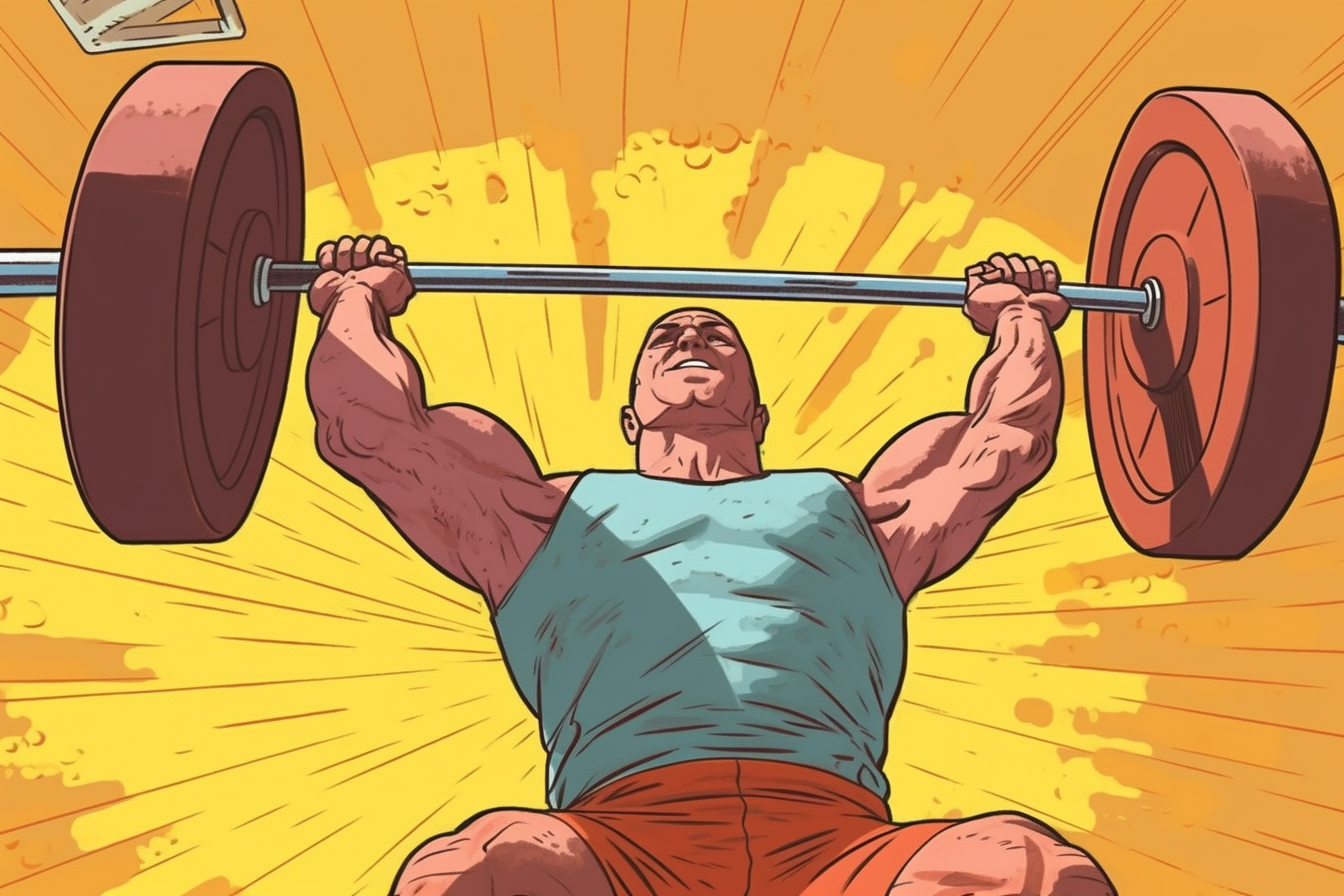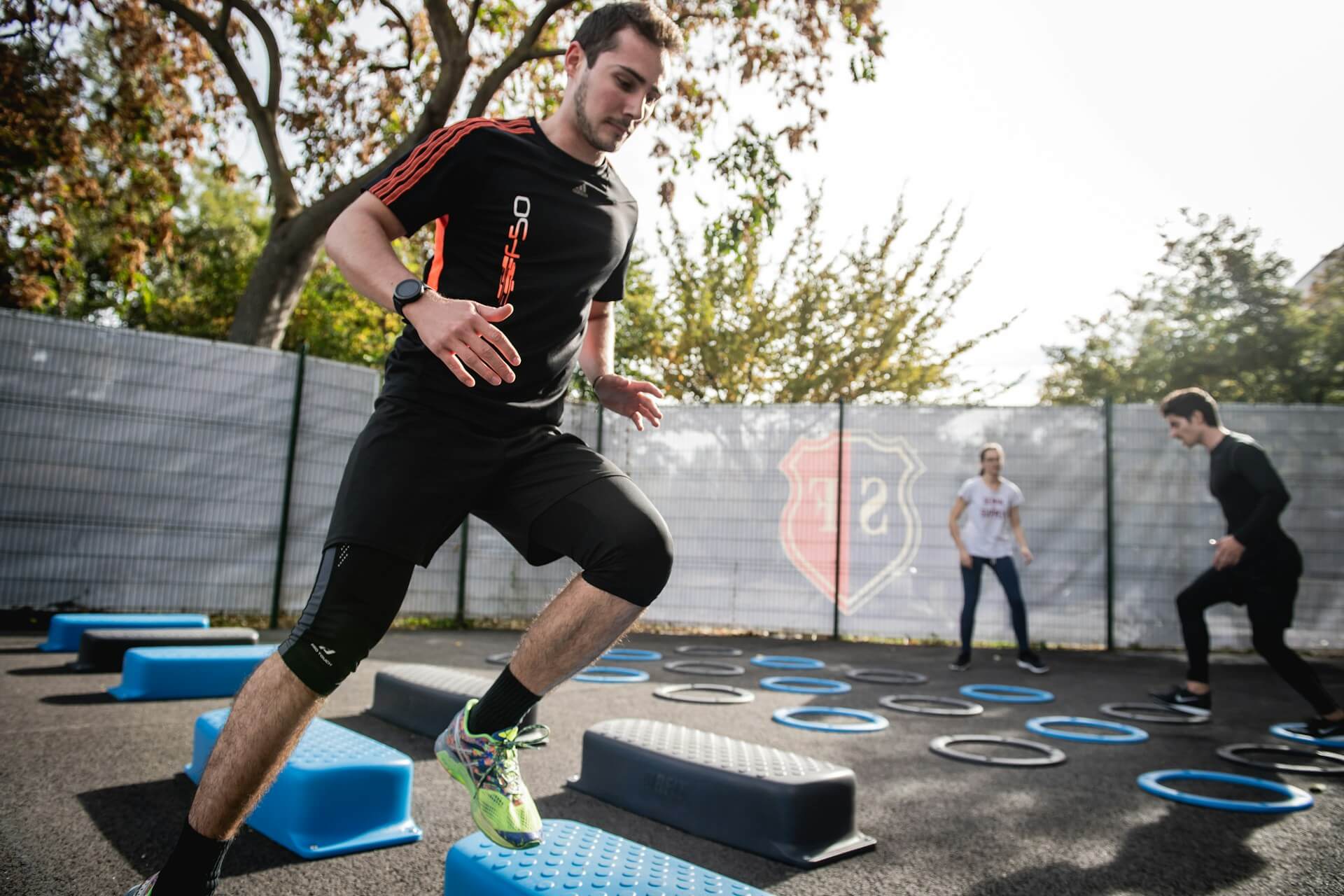
As an Amazon Associate, Modded gets commissions for purchases made through links in this post.
Everyone struggles with the proper form for lifting weights — even people who have been training for years. It takes thousands of repetitions and close attention to detail to develop solid form. Very few people ever achieve perfection.
What is the Proper Form for Lifting Weights?
In truth, there is no such thing as an all-encompassing “proper form” for lifting weights. Everyone has a unique body composition, so the “proper form” is naturally going to look different from person to person. Here are some important factors that determine your ideal form:
- Height: Your height is a significant influence on your weight-lifting form, especially during compound exercises like the squat, deadlift and bench press. Shorter people have smaller limbs and lower centers of gravity, which gives them a slight advantage. Taller people have longer limbs and higher centers of gravity, so staying balanced during heavy training is more difficult. The ideal height for muscle growth is historically between 5’9” and 5’11”.
- Skeletal structure: Your bone length and density also play key roles in your lifting technique. For example, people with long femurs often have a hard time squatting because their skeletal structure makes the lift awkward. People with narrow clavicles struggle with pressing exercises compared to people with broad clavicles.
- Muscle insertions: We all might have the same muscles, but our insertions can be vastly different. Just look at the discrepancies between the two greatest bodybuilders of all time – Arnold Schwarzenegger and Ronnie Coleman. Since they had vastly different physiques, they also performed exercises with vastly different techniques.
- Injury history: Of course, your injury history also impacts your form. If you suffer from chronic knee issues, your form during leg exercises will obviously look different compared to someone with no knee problems. People with injuries also tend to overcompensate with other muscles to reduce the stress on the injured area, which negatively impacts form.
These factors drastically change an exercise’s “proper form” from person to person. However, there are still some general rules everyone should follow to achieve proper form for lifting weights.
5 Must-Know Tips to Achieve Proper Form
Before you dive into the specifics of each exercise’s proper form, you need to master the basic fundamentals. These five steps apply to all exercises and will help you become much more efficient and productive in the gym
1. Lift With a Full Range of Motion
Full range of motion is the most important part of proper weight-lifting form. It incorporates the most muscle fibers and ensures that you build a balanced, well-rounded physique. If you perform partial reps, you hinder your progress and increase the risk of injury. This video does a great job breaking down the difference between full vs. partial range of motion for different exercises.
Full range of motion can look different for you compared to other people. You can study other people’s lifting techniques but don’t use them as an exact template. Your unique body composition naturally determines your range of motion.
2. Stop Ego Lifting
In order to achieve full range of motion, you have to stop ego lifting and use lighter weights. Focus on the mind-muscle connection instead of the number of pounds on the bar. You need to control the weight throughout the exercise. It’s impossible to control your form if you’re lifting too heavy.
There is a common misconception in the fitness industry that adding more weight is the only way to achieve progressive overload. This could not be further from the truth. Progressive overload comes in many forms, including improving your form. Even if you stay at the same weight for months on a certain exercise, you’re still getting stronger if you steadily improve your form.
3. Brace Your Core
Your core muscles are key contributors to every single exercise. If you have a relaxed, unstable core, you can never hope to achieve proper form. You need to brace your core muscles — almost like you’re getting ready to absorb a punch — when lifting weights. This tip is especially important for heavy compound movements like the bench press, squat and deadlift.
By stabilizing your core, your other muscles can focus on pushing the weight. How many times have your arms or legs started shaking at the end of a challenging set? This phenomenon occurs because you lose tension in your core muscles, which causes your limbs to become more unstable. Core stability is absolutely essential for proper weightlifting technique.
4. Use the Right Grip
Your grip technique also plays a crucial role in proper form. For pulling exercises like rows and pull-ups, it’s usually best to use a thumbless grip. A thumbless grip allows you to bring the bar closer to your body and get closer to a full range of motion. For pushing exercises like bench press, it’s best to use a standard grip and keep your thumb wrapped around the bar.
The bar sits in our hands differently during pull and push exercises, so why would you use the same grip? It’s important to use the appropriate grip technique for each. Bench pressing with the thumbless grip is extremely dangerous for novices and beginners. Remember the difference between these two grip varieties before every exercise.
5. Squeeze the Bar
Squeezing the bar is another detail that many people overlook when lifting weights. They’re holding onto the bar, but their grip is weak and passive. Every time you wrap your hands around a barbell, dumbbell or machine, you should try to break it in half with your own hands. A tight grip causes your entire lower arm to tense up, which makes for a safer, more stable exercise.
The keyword here is “tension”. As your muscles spend more time under tension, more fibers break down and you develop a better connection to the muscle. This chain reaction leads to more gains. Squeeze the bar like you mean it!
Unlock Your Ideal Form
It takes years of practice and thousands of repetitions to achieve proper form for lifting weights. You need to be patient. Focus on each individual exercise during your workouts and don’t get ahead of yourself. Applying these five tips will accelerate your progress and help you unlock your ideal form!
Stay up to date with the latest by subscribing to Modded Minute.
Author
Jack Shaw is a senior writer at Modded. Jack is an avid enthusiast for keeping up with personal health and enjoying nature. He has over five years of experience writing in the men's lifestyle niche, and has written extensively on topics of fitness, exploring the outdoors and men's interests. His writings have been featured in SportsEd TV, Love Inc., and Offroad Xtreme among many more publications.






